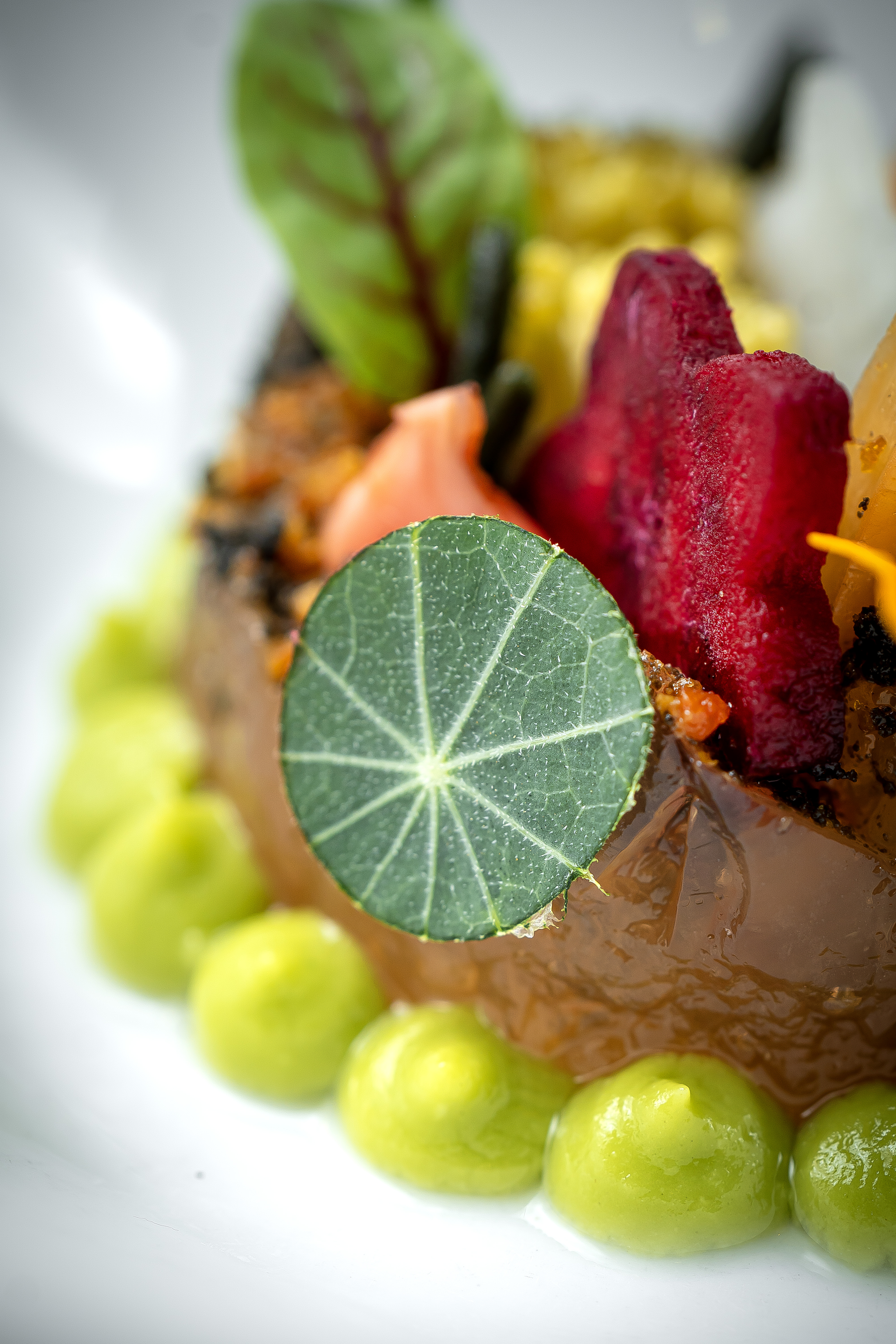When picturing the Canary Islands, one might think of all-inclusive resorts, big hotels with bulging breakfast buffets and all-you-can-eat restaurants. But this image is outdated. A visit to Tenerife reveals the island's profile as a luxury culinary destination with a focus on sustainability and local food culture.
Tenerife's gastronomy scene has grown considerably in recent times. While Tenerife's previous focal point was on mass tourism, it's now aiming to become more of an exclusive and luxury destination. The south of Tenerife in particular – where it's sunnier than in the north – is focusing on high end guests. Most new hotels in Tenerife are five-star hotels that attract guests looking for special culinary experiences.
 (1).jpg)
Perhaps the best example is the Corales Beach Hotel, which has the most Michelin stars under one roof in Spain. The hotel has two one-star restaurants: San Ho and Il Bocconicino. Two-star Restaurante El Rincón de Juan Carlos is also part of the resort. Remarkably, lthis restaurant operated as a family restaurant for years before settling at the resort. It then grew from one to two Michelin stars within a year.
The Corales Hotel Group opened a new location 1.5 km from the beach resort in March 2025. The new hotel has two restaurants, where they hope fine dining restaurant Crater will become a culinary attraction. The restaurant focuses on the local culinary traditions of the Canary Islands.
Focus on local produce
Chefs and restaurateurs in Tenerife pay close attention to local culinary traditions and products. This is a fairly new development, says sommelier and consultant Rodrigo Gonzalez of Venture Group, which has 14 restaurants on the island. Gonzalez, a Tenerife native, previously worked as head sommelier for chef Dani García at the three-star restaurant of the same name in Marbella, for many years. Gonzalez has now returned to Tenerife and is embracing the challenge of taking Venture Group's restaurant portfolio to the next level.
“Here on the island, we have great produce because of the many different microclimates. Also, the fertile volcanic soil plays a big part." The new fine-dining restaurant Crater is all about produce that comes from the Canary Islands. Each course starts with an explanation of a local product, which then plays the main role in the dish.
Chef Adrián Bosch of restaurant San Ho* also stresses the importance of local produce in his menu: “Every morning, I’m in contact with fishermen from the island. They let me know what was caught that day, so I can put it on my menu. I work with many small-scale farmers who each have their own speciality. They feel like family.” The more casual restaurant Troqué also centralizes local produce. Both in the restaurant and on his social media, chef Daniel Tereja works with several producers from the island.
-0667-7278.jpg)
Local wines
Besides the many small-scale farmers and fishermen, Tenerife is also home to countless winemakers. In total, the island has around 70 wineries. Many locals also make their own wine, which they sell to neighbors and other islanders in small home restaurants or from their front gardens.
The history of winemaking in Tenerife dates back to the 15th century, when Spaniards introduced grape vines. The Canary Islands were spared the phylloxera plague that devastated many vineyards across Europe in the second half of the 19th century, preserving very old vines. Tenerife's varied microclimates and altitudes mean that different grape varieties can be grown in different regions of the island. The volcanic soil and the presence of Spain's highest mountain give the wines here a unique mineral character.
.jpg)
Envínate
One particular Tenerife winery that has scored high marks internationally in recent years is Envínate. It was founded by Laura Ramos, Jose Martínez, Roberto Santana and Alfonso Torrente, who know each other from studying oenology at the University Miguel Hernández in Alicante.
With Envínate, they aim to preserve and revitalise Spain's most historic wine regions by working with old techniques and grape varieties more than 100 years old.
The winemakers' main goal is to keep vineyards healthy and to highlight the special terroir of their wines. No chemicals are used in Envínate's vineyards and plots are picked by hand. Envinate's wines are fermented exclusively with wild yeasts.
Japanese cuisine in the spotlight
Besides focusing on local cuisine and traditions, Japanese cuisine is also an important culinary influence within the island's gastronomy. The reason: many of the fish popular in Japanese cuisine can be caught locally here. Tenerife lies in the Atlantic Ocean and fish such as horse mackerel and tuna are caught fresh here daily when in season.
Restaurant San Ho*, located in the five-star Corales Beach hotel, is an example of an establishment inspired by Japanese cuisine. Chef Adrián Bosch is at the helm. Within his menu, he pays attention to local, fresh products, using various Japanese techniques in the process. At the start of dinner, for instance, as many as seven different homemade soy sauces are presented. He also serves a selection of raw, fresh fish and an entire course is dedicated to wagyu prepared in three different ways.

Restaurant Kensai is situated in the gardens of Hotel Bahía Duque, located on the promenade of Playas Del Duque in the south of Tenerife. Guests can go there for a Japanese omakase menu, or order à la carte. The menu includes dishes like sashimi and seafood toban-yaki. Not only is the menu Japanese-inspired, but so is the restaurant's interior which features the use of wood, gridded sliding doors, and oriental symbols.